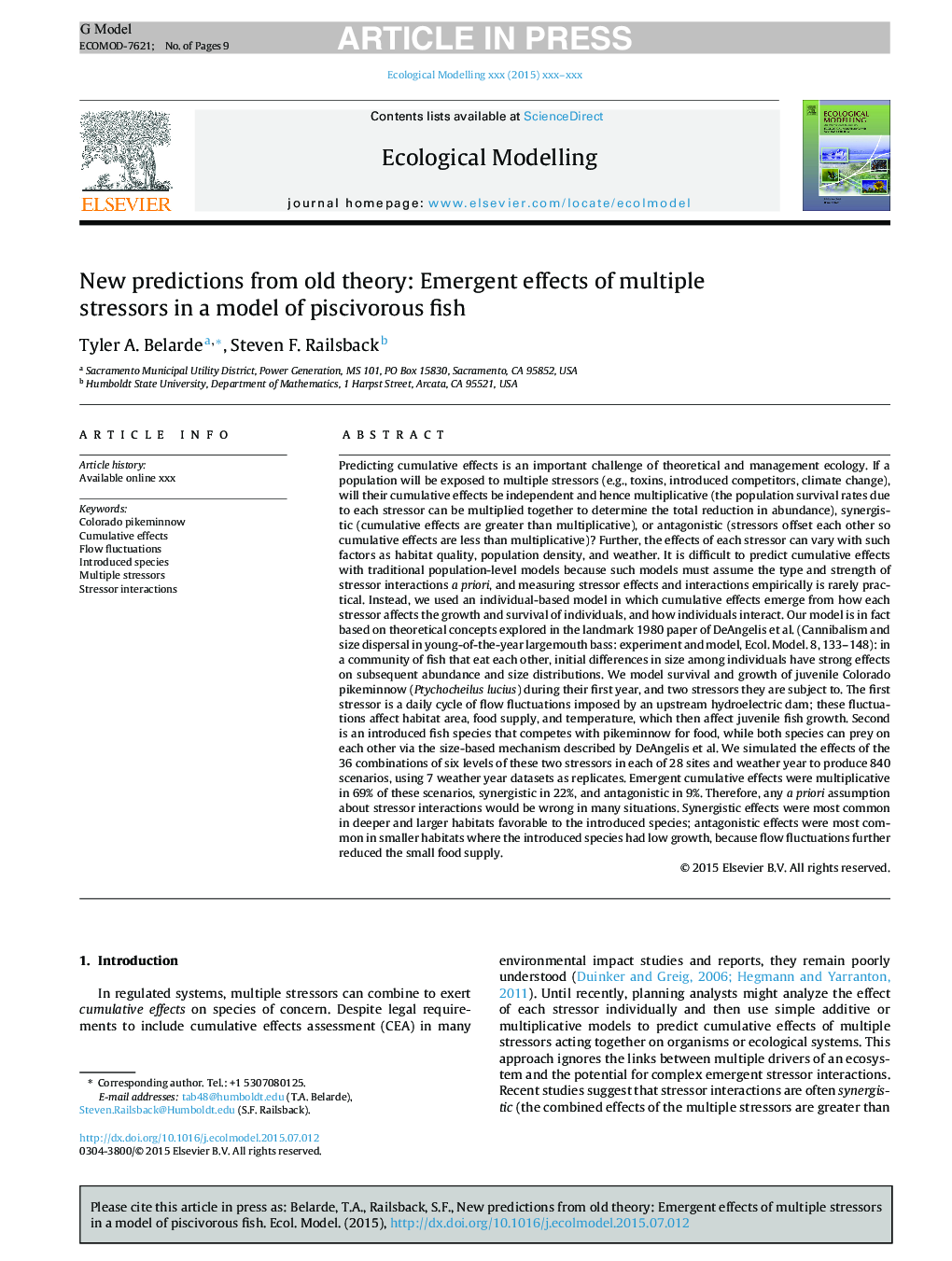| کد مقاله | کد نشریه | سال انتشار | مقاله انگلیسی | نسخه تمام متن |
|---|---|---|---|---|
| 6296338 | 1617421 | 2016 | 9 صفحه PDF | دانلود رایگان |
عنوان انگلیسی مقاله ISI
New predictions from old theory: Emergent effects of multiple stressors in a model of piscivorous fish
ترجمه فارسی عنوان
پیش بینی های جدید از نظریه های قدیمی: اثرات مضر چند تن از عوامل استرس زا در یک مدل ماهی آفتابگردان
دانلود مقاله + سفارش ترجمه
دانلود مقاله ISI انگلیسی
رایگان برای ایرانیان
کلمات کلیدی
موضوعات مرتبط
علوم زیستی و بیوفناوری
علوم کشاورزی و بیولوژیک
بوم شناسی، تکامل، رفتار و سامانه شناسی
چکیده انگلیسی
Predicting cumulative effects is an important challenge of theoretical and management ecology. If a population will be exposed to multiple stressors (e.g., toxins, introduced competitors, climate change), will their cumulative effects be independent and hence multiplicative (the population survival rates due to each stressor can be multiplied together to determine the total reduction in abundance), synergistic (cumulative effects are greater than multiplicative), or antagonistic (stressors offset each other so cumulative effects are less than multiplicative)? Further, the effects of each stressor can vary with such factors as habitat quality, population density, and weather. It is difficult to predict cumulative effects with traditional population-level models because such models must assume the type and strength of stressor interactions a priori, and measuring stressor effects and interactions empirically is rarely practical. Instead, we used an individual-based model in which cumulative effects emerge from how each stressor affects the growth and survival of individuals, and how individuals interact. Our model is in fact based on theoretical concepts explored in the landmark 1980 paper of DeAngelis et al. (Cannibalism and size dispersal in young-of-the-year largemouth bass: experiment and model, Ecol. Model. 8, 133-148): in a community of fish that eat each other, initial differences in size among individuals have strong effects on subsequent abundance and size distributions. We model survival and growth of juvenile Colorado pikeminnow (Ptychocheilus lucius) during their first year, and two stressors they are subject to. The first stressor is a daily cycle of flow fluctuations imposed by an upstream hydroelectric dam; these fluctuations affect habitat area, food supply, and temperature, which then affect juvenile fish growth. Second is an introduced fish species that competes with pikeminnow for food, while both species can prey on each other via the size-based mechanism described by DeAngelis et al. We simulated the effects of the 36 combinations of six levels of these two stressors in each of 28 sites and weather year to produce 840 scenarios, using 7 weather year datasets as replicates. Emergent cumulative effects were multiplicative in 69% of these scenarios, synergistic in 22%, and antagonistic in 9%. Therefore, any a priori assumption about stressor interactions would be wrong in many situations. Synergistic effects were most common in deeper and larger habitats favorable to the introduced species; antagonistic effects were most common in smaller habitats where the introduced species had low growth, because flow fluctuations further reduced the small food supply.
ناشر
Database: Elsevier - ScienceDirect (ساینس دایرکت)
Journal: Ecological Modelling - Volume 326, 24 April 2016, Pages 54-62
Journal: Ecological Modelling - Volume 326, 24 April 2016, Pages 54-62
نویسندگان
Tyler A. Belarde, Steven F. Railsback,
